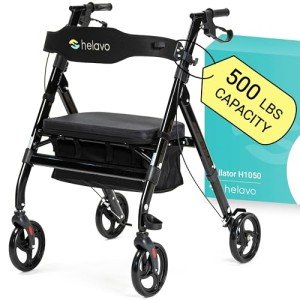The Importance of Safe Walkers: Ensuring Safety and Independence for All
As our population ages, the need for mobility assistance becomes progressively evident. Safe walkers, typically referred to as walking aids or rollators, play a vital role in improving the safety and independence of individuals, particularly the elderly and those with specials needs. This article talks about the significance of safe walkers, their types, features to think about, and answers often asked concerns about their usage.
Understanding Safe Walkers
A safe walker is a mobility gadget designed to help people maintain balance, stability, and confidence while walking. Compact Walker provides support when traversing different terrains, using a safer option to relying entirely on canes or crutches.
Types of Safe Walkers
Safe walkers come in various types, each tailored to satisfy various requirements. Here's a table summing up the main kinds of walkers readily available in the market:
| Type of Walker | Description | Perfect For |
|---|---|---|
| Requirement Walker | Lightweight, basic structure, no wheels. | Users requiring stability on flat surfaces. |
| Two-Wheeled Walker | Features 2 front wheels; back legs are rubber. | People requiring some mobility while still needing support. |
| Four-Wheeled Walker (Rollator) | Equipped with two or four wheels, brakes, and a seat. | Users trying to find mobility and the option to rest. |
| Walkers with Seat | Comparable to rollators but primarily intended for stability. | Those who may require frequent rest stops. |
| Knee Walkers | Created for people with leg injuries, enabling mobility while seated. | Suitable for post-surgery healing. |
Key Features of Safe Walkers
When picking a safe walker, several features should be considered to make sure both security and convenience. Below is a list of important features to look for:
- Weight Capacity: Choose a walker that accommodates the user's weight to guarantee stability and security.
- Height Adjustment: Ideal walkers ought to have adjustable heights to offer a comfortable grip for the user.
- Wheels: Opt for walkers with appropriate wheel sizes according to surface; larger wheels provide much better mobility on uneven surface areas.
- Brakes: An excellent walker should have user-friendly brakes to guarantee safety during usage.
- Foldability: A foldable design enables easy transport and storage.
- Storage Options: Many walkers come with baskets or trays for carrying individual items, improving convenience.
- Comfortable Grips: Ergonomic deals with can avoid discomfort and enhance control during use.
- Seat: If the walker includes a seat, it ought to be tough and comfortable for resting when required.
Benefits of Using a Safe Walker
Safe walkers provide many advantages that extend beyond mere mobility. Here are some benefits:
- Enhanced Stability: Walkers offer strong support, lowering the threat of falls, which prevail among seniors.
- Enhanced Confidence: Using a walker can empower people to engage more actively in day-to-day activities, promoting independence.
- Physical Activity: Safe walkers motivate users to remain active, assisting maintain strength, flexibility, and coordination.
- Social Inclusion: With increased mobility, people can get involved more easily in celebrations and leisure activities.
- Personalization: Many walkers permit tailored adjustments to meet particular health requirements.
Often Asked Questions (FAQs)
1. How do I understand if a walker is right for me or my liked one?
Determining the proper walker depends on an individual's mobility requirements, balance, and overall health. Consulting a health care professional can supply individualized suggestions.
2. Is it needed to utilize a walker inside your home as well as outdoors?
Yes, a walker can be advantageous both inside your home and outdoors. It can boost stability on slippery floorings or unequal outdoor courses, making it a flexible mobility aid.
3. Can I take my walker on public transport?
Most walkers are developed to be lightweight and foldable, making them appropriate for public transport. Talk to specific transportation services for their policies.
4. What is the typical expense of a safe walker?
Rates can differ based upon the type and features. Requirement walkers can cost as low as ₤ 50, while more advanced rollators can go beyond ₤ 200.
5. How do I keep my walker?
Regular maintenance includes looking for loose screws, ensuring wheels are practical, and cleaning it to remove dirt or debris. Regular checks will lengthen the life of the gadget.
The value of safe walkers can not be understated. These mobility devices are important for maintaining an independent lifestyle, enhancing security, and instilling confidence in users. With several options available, discovering the right walker tailored to individual needs can considerably enhance the lifestyle. Whether it's for personal use or care for a loved one, investing time in selecting the suitable walker is a crucial action toward ensuring safety and promoting an active way of life.

